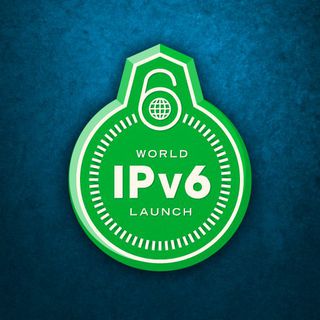The global practice of the transition to IPv6: what is happening today?
 On the 6th of June, 2012, World Ipv6 Launch - the installation of a new protocol - will take place. This time, the new protocol will be launched in real operating conditions and, in the process of preparation for this event, each group of participants has already assumed certain commitments. For example, Internet providers already provide some of their customers with IPv6 addresses. This decision has already been made by AT&T, Comcast, Free Telecom, Internode, KDDI, Time Warner Cable, XS4ALL and other providers. Network equipment manufacturers (Cisco, D-Link), in turn, activate IPv6 settings in all their routers. The final step will be taken by Internet companies (Google, Facebook, Microsoft Bing, Yahoo, etc.), which will install IPv6 on their main websites, and some of them will transfer their corporate networks to IPv6 as well. Moreover, this year on the 30th of September, all governmental structures of the USA will be obligated to switch to IPv6.
On the 6th of June, 2012, World Ipv6 Launch - the installation of a new protocol - will take place. This time, the new protocol will be launched in real operating conditions and, in the process of preparation for this event, each group of participants has already assumed certain commitments. For example, Internet providers already provide some of their customers with IPv6 addresses. This decision has already been made by AT&T, Comcast, Free Telecom, Internode, KDDI, Time Warner Cable, XS4ALL and other providers. Network equipment manufacturers (Cisco, D-Link), in turn, activate IPv6 settings in all their routers. The final step will be taken by Internet companies (Google, Facebook, Microsoft Bing, Yahoo, etc.), which will install IPv6 on their main websites, and some of them will transfer their corporate networks to IPv6 as well. Moreover, this year on the 30th of September, all governmental structures of the USA will be obligated to switch to IPv6.
All devices connected to the Internet have a unique IP address, by means of which they recognize each other online. IP address format is provided by a special protocol, the main function of which is data transmission by means of a set of interconnected computer networks. Currently, the Internet operates on the basis of IPv4 protocol, where each address consists of 32 bits.
It is necessary to switch to a 128-bit IPv6, which has 2128 addresses, due to the global depletion of available addresses in the IPv4 (232) space. The last time, the final IPv4 address blocks were distributed among the regional registers on the 1st of February, 2011. New addresses became necessary due to the ever faster growing number of mobile and household Internet devices – IP TV sets, cameras, telephones, ATMs, POS terminals.
Most personal computers are now ready to switch to IPv6. Starting with Windows Vista, Microsoft will include this protocol in all its operating systems. Windows 7 and the forthcoming brand new operating system Windows 8 also support IPv6 protocol, and Windows XP users can install this protocol themselves. Apple OS X also fully supports IPv6 protocol (starting with version 10.5).
Towards the set date, more companies announce their readiness for this event. Similarly, in April, the world’s largest content delivery network Akamai announced that it was ready to launch IPv6 protocol. From 20 to 30 percent of the World Wide Web traffic goes through the Akamai’s servers at the average speed of 5 terabits per second. It took two years to prepare a huge Akamai’s infrastructure for the transition to IPv6. This company has 105 thousand servers in 78 countries. Among its clients are Apple, the U.S. government and the Chinese Central Television.
It took two years to prepare a huge Akamai’s infrastructure for the transition to IPv6. According to Akamai engineers, it was more complicated for their infrastructure to switch to the new protocol than for the Google Corporation, which participated in the events of the International IPv6 Day last summer. Content delivery network must be as close to the end user as possible, therefore it cannot be concentrated in several huge data centers with a homogeneous architecture.
We would like to remind you that on the 8th of June, 2011, a global-scale testing event of the preparation of the World Wide Web to switch to IPv6 – World IPv6 Day – took place. From 0:00 a.m. to 11:59 p.m. that day, all the participants of the event provided access to their resources for the IPv4 and IPv6 protocols. Among the participants were the world’s largest Internet companies: Microsoft, Google, Yahoo, Facebook, Yandex, Rambler, etc.
The Google company began preparing for the transition to IPv6 very early. This meant that almost all servers of the company, including Google search, Gmail, YouTube and many others, had to be adapted to the new protocol. To ensure that the transition to IPv6 causes as little disturbance to end users as possible, this Internet company has even released some of the adjustments of its Chrome browser, designed for a quick response to potential problems of IPv6 network. Thus, thanks to all the participants of the event, the testing of IPv6 was successful.
The company “Penkių kontinentų komunikacijų centras”, the manager of a fiber-optic network “Skynet”, has also announced its readiness to switch to IPv6 protocol. Currently, the network operates at the continuing mode and is fully prepared for the transition to the operating mode. During the transitional phase, for the convenience of Skynet customers, the Internet will be available in both IPv4 and IPv6. Thus, the high quality of services offered will not suffer and all the users will be able to try the “new Internet” along with the entire world population.
The transition of networking giants to IPv6 will considerably accelerate the adoption of the new Internet protocol worldwide and the year 2012 has the potential to be significant in the history of the Internet, counting more than 40 years.
Connect to the future with the Skynet network!
More information about IPv6 >>>